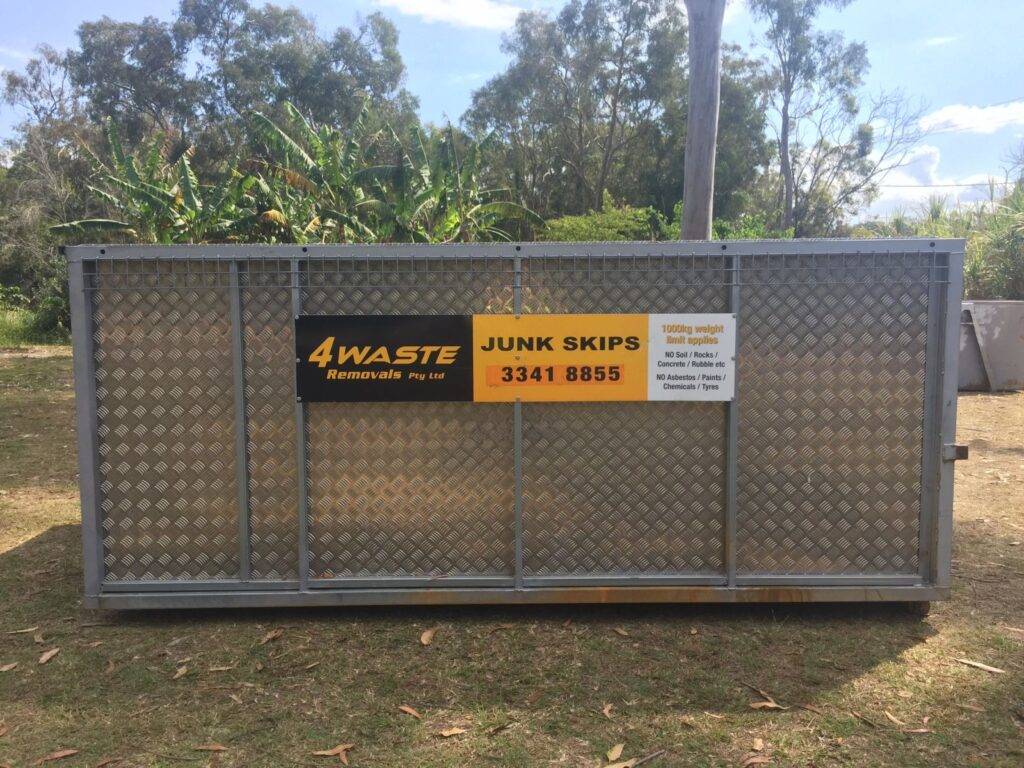
Have you ever wondered why skip bins are called skip bins? It’s not like you need to skip to load waste into them. So why skip bins? Why not tip bins? That seems to make more sense to me!
I was recently asked this question by one of our skip bin customers, and I didn’t have an answer. So, I did some research to find the answer, looking where else but Wikipedia.
According to Wiki, “The origins of calling a rubbish cart a skip come from the word ‘skep’, used to refer to a basket. ‘Skep’ itself comes from the Late Old English sceppe, from the Old Norse skeppa ‘basket’.”
Who would have thought? So skep evolved to skip, and skip evolved to skip bins.
Table of Contents
History of Skip Bins
We now know how skip bins got their name, but let’s look at their history in more detail. It is evident that skip bins evolved from a form of a basket, which presumably was used for waste collection back in the 1700s.
The ‘skep’, or basket, would have been formed from wicker, straw or hollow logs and evolved into a horse and carriage/cart sometime in the 18th Century. By the 19th Century, it developed further to form what we today know as skip bins.
Wiki states “While the first recorded use of a rubbish skip dates back to 1922, the practice of using skips to dispose of residential and commercial waste became mainstream over the following century, culminating in the modern skip waste disposal system that is used today.”
Uses of Skip Bins over time
The history of skip bins somewhat shapes their usage. In the 1700s, when they were still known as ‘skeps’, their fragile nature meant they were only suitable for the collection of light waste material. Their evolvement in the 1800s came about because miners needed a more robust waste collection solution to get rid of unwanted mining waste. Thus, wheels were added, and the term ‘skip’ formed. It wasn’t until the 1800s that skip bins started being used by businesses and everyday people and moved from being horse-powered to fuel-powered by employing a truck.
Skip Bin Uses Today

Junk Skip Bin from 4 Waste
Today, there is very little that skip bins cannot be used. They are found commonly on building and construction sites for the removal of heavy construction waste, and at residential dwellings for small to large-scale renovations. They are also used to remove junk and general waste from homes and premises, and they can even be used to remove garden waste for a home.
Their usage is only limited by the waste type that is permitted to be placed in them. For example, here at 4 Waste Walk-In Skip Bins, we allow the following waste in our junk skip bins:
- Electronics
- Household Appliances
- White Goods
- Furniture
- Toys
- Sports/Gym Equipment
- Sinks
- Baths
- Mattresses
- Barbecues (Gas Bottle Removed)
- Garden Waste
We also have garden skip bins that exclusively accept green waste.
Our permitted waste means our skip bins can be used for a wide range of domestic and commercial applications.
Conclusion
Skin bins got their name from the Norse language ‘skeppa’, and the Old English language ‘sceppe’, which means ‘basket’. It then evolved to ‘skip’ before settling on ‘skip bin’. Over history, skip bins started as a woven basket. They later developed into horse-driven carts before they evolved into the back of a truck in the 1900s, which is how they remain today.
As with the name and design, skip bins usage has also changed over time. Today, you can find a skip bin suitable for just about anything. Their usage is limited only by the waste, which is prohibited from being placed in them.
At 4 Waste Walk-In Skip Bins, our skip bins are ideal for residential and commercial use. They are easy to use, affordable, and accept a broad range of general waste.
To enquire or hire a skip bin from 4 Waste Walk-In Skip Bins, simply call 0413 333 330.
